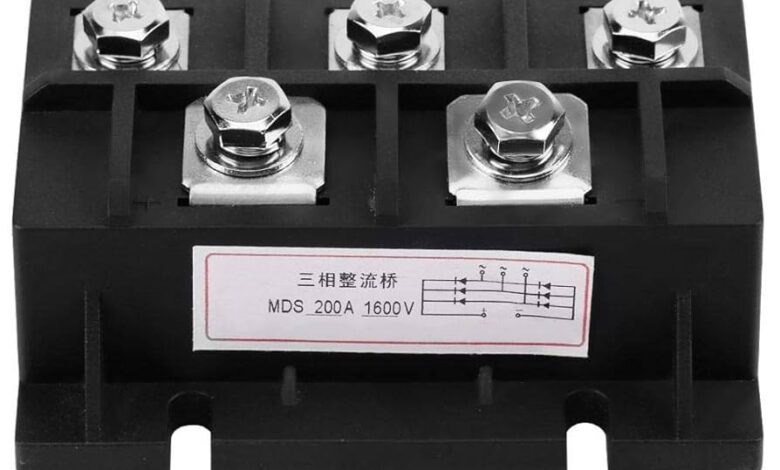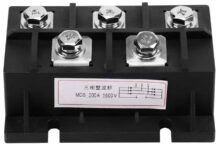Three Phase Bridge Rectifier: Advantages, Applications, and Power Efficiency

Introduction
Three phase bridge rectifiers — also known as three-phase full-wave bridge rectifiers — play a crucial role in industrial and high-power electronic systems. Thanks to their efficient design and robust performance, they are widely adopted in numerous commercial and engineering applications. In this article, we’ll explore the key advantages and real-world applications of a three phase bridge rectifier, highlighting why it stands out in modern power conversion technology.
Advantages of Three Phase Bridge Rectifiers
High Transformer Utilization Factor
Three phase bridge rectifiers utilize transformers more effectively than their single-phase counterparts. This optimized transformer usage reduces size and cost, making them more suitable for large-scale power applications.
Smaller Filter Size Requirement
Due to a higher pulse frequency in the output voltage (six pulses per AC cycle), the resulting DC output has significantly less ripple. This allows the use of compact and cost-effective filter circuits, saving both space and expense.
Higher Output Voltage and Power Handling
Bridge rectifier in three-phase systems can manage larger voltages and currents, making them ideal for powering heavy industrial machinery and equipment that require stable and high-power DC output.
Improved Efficiency and Power Factor
These rectifiers exhibit better efficiency with reduced power losses and noise. Moreover, three-phase systems inherently provide a higher power factor, improving overall energy transmission and reducing energy waste.
Balanced Load on Power Supply
Three-phase bridge rectifiers draw power evenly from the supply lines, resulting in a symmetrical load. This balanced power draw helps minimize neutral current and extends the life of the electrical infrastructure.
Lower Harmonic Distortion
The design of a three-phase bridge rectifier naturally reduces harmonic distortion in input currents. This leads to less electromagnetic interference (EMI), better system stability, and improved performance of connected equipment.
Applications of Three Phase Bridge Rectifiers
Industrial Motor Drives
Used in variable frequency drives (VFDs), three-phase bridge rectifiers convert AC to DC to control motor speed and torque in systems like conveyor belts, pumps, and HVAC fans.
Electric Vehicle Charging Systems
Electric vehicle (EV) chargers rely on three-phase bridge rectifiers to convert AC grid power to DC for efficient and fast battery charging, meeting the high demands of modern EV infrastructure.
Telecommunication Power Systems
These rectifiers provide uninterrupted and stable DC power for telecommunication networks, supporting sensitive electronics and minimizing downtime.
HVDC (High Voltage Direct Current) Transmission
In HVDC systems, three phase bridge rectifiers convert AC to DC for efficient long-distance power transmission, reducing losses compared to traditional AC transmission.
Electrochemical Processes
Processes like electroplating, electrolysis, and anodizing require high-current DC supply, which three-phase rectifiers provide reliably, ensuring consistent product quality in manufacturing.
Renewable Energy Systems
In solar, wind, and other renewable energy setups, rectifiers from companies like Naina Semiconductor convert AC output from generators to DC for battery storage or grid integration, enabling clean and stable energy distribution.
Conclusion
The three phase bridge rectifier is a cornerstone of modern electrical systems. With advantages such as higher power output, better efficiency, balanced loading, and reduced harmonic interference, it is the preferred solution in a wide range of high-power and industrial applications. From renewable energy systems to electric vehicle infrastructure, these bridge rectifiers are critical for powering the future.





